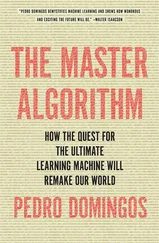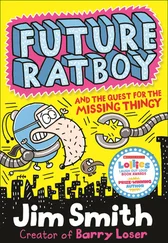Aside from sanitation and security, many business improvement districts also provide amenities to increase the appeal of their area. Lara pitched Bryant Parks caretakers an ambitious Wi-Fi project that would cover the parks entire 10 acres and turn it into the largest urban hot spot in the world. They had already noticed that in recent years laptops and mobile phones had been allowing people to linger past lunch hour, and they welcomed our offer to volunteer to set up wireless Internet service. Wi-Fi, we argued, would connect the park even more seamlessly to the commercial life of the surrounding business district. Intel provided the wireless equipment—our efforts coincided with the launch of the company’s new low-power, Wi-Fi-ready Centrino processors designed especially for laptops. Bryant Park would provide a unique showcase for the future of connected, mobile computing.
On June 25, 2002, Schmidt flipped the switch and powered up the network’s three antennas to bring Bryant Park into the twenty-first century. That summer, some three thousand people would log on, a stunning number at the time because far fewer devices had Wi-Fi capabilities. On Monday nights, when HBO hosted movies on a large screen hoisted at the park’s western edge—one of the city’s hottest singles’ scenes of the time—the network lit up with activity. Just over a year after Schmidt had turned on the first NYCwireless node at his corner cafe, we retired to the park’s beer garden to celebrate. He turned to me and grinned. “What’s next?” he asked. “What’s your pie in the sky?”
I knew we’d hit on a model that could be copied by communities everywhere: volunteer hackers, cheap off-the-shelf wireless equipment, and the support of institutions with an interest in the health of public spaces. I pulled out a map of Manhattan’s Financial District, where the Downtown Alliance (another business improvement district) had already hired us to build a hot spot at Bowling Green, the city’s oldest park. With Cometa in mind—the company was boasting in the tech press about its plans to place a hot spot within a five-minute walk or drive of every American—I ticked off a half-dozen sites where we could beat them to the punch line. Over the next year, we rolled out seven hot spots across the tiny southern tip of Manhattan, creating the world’s first free wireless district.
Those early projects paved the way for city governments to accelerate the spread of public Wi-Fi. Business improvement districts were already seen as a kind of experimental proving ground for new ways of managing cities. If they could do it, many thought, so could a local government. In 2005 Philadelphia launched the municipal wireless movement with a bold announcement of a city-scale wireless project. While Philadelphia’s project ultimately failed, as we will see in chapter 7, thousands of communities around the world have successfully built public Wi-Fi networks. Not all of them are free, but even those that aren’t have had a major impact attracting talent and tourists and introducing competition into local broadband markets.
Bryant Park became a showroom for sharing our dream of free public Wi-Fi with the world. It was a direct challenge to the telecommunications industry—the massive Verizon corporate headquarters at the corner of Forty-second Street and Sixth Avenue cast its long shadow over the park’s western half. More than a decade later, I still meet with visitors from around the world there, to demonstrate firsthand the power of connecting the virtual commons of the Internet and the physical commons of the city center. George Amar, the head of innovation for the Paris Metro, told me that our 2005 meeting there profoundly changed his view of Bryant Park’s role in the city’s transit system. Disconnected, it was a place for office workers to relax. Connected, it had become a digital waiting room for the massive subway station beneath it.
Today, community wireless groups continue to deploy new hot spots around the world, but their original leaders have moved on to careers and family. The legacy of those heady days lives on and pops up from time to time in the oddest of places. Zuccotti Park, the scene of Occupy Wall Street’s encampment in autumn 2011, was one of the original Downtown Alliance hot spots. Though that hot spot was permanently decommissioned during the parks 2005 renovation, protest organizers simply marched up to another one at the 60 Wall Street Atrium to upload video footage. Ironically, that publicly owned private space was housed inside the US headquarters of Deutsche Bank, one of the world’s most important financial institutions, which was indirectly financing the hot spot through its dues to the Downtown Alliance.
But by far the most rewarding NYCwireless story is that of Veljo Haamer, who led a successful effort to blanket the Baltic nation of Estonia with free Wi-Fi. A visit to Bryant Park in 2002 inspired him to return home and light up an entire nation with free Wi-Fi. “New York gave me power,” he told a reporter in 2011, “and now it’s changed Tallinn and Estonia as well.”
Pie in the sky, indeed.
Citizen Microcontrol
At the grass roots, the life cycle of technology innovation is now measured in months. By 2005 Crowley and Rainert had sold Dodgeball to Google and set up shop in the search giant’s New York office. But just as Crowley had struggled to get Vindigo to pay attention to social software, Google was slow to see Dodgeball’s potential as well. The service languished for years until Google decided to finally pull the plug in March 2009. Meanwhile, the community wireless movement had quietly faded away as municipalities began to take over the deployment of public Wi-Fi access on a larger scale. But back at the Interactive Telecommunications Program a new effort in city hacking was spinning up and cracking open the black arts of sensing and actuation in a direct challenge to industry’s vision of the Internet of Tilings.
One can imagine that hanging on a cubicle wall at Cisco or IBM there’s a list of the world’s priorities for connecting things to the Internet. If they are even on the list at all, I suspect houseplants are close to the bottom. But if we think about the most basic of human physiological needs—oxygen—the value of a tweeting ficus tree is obvious. Unless you’ve got a green thumb, however, keeping those symbiotic companions alive can be a challenge. It should come as no surprise, then, that a bunch of students would try to crowdsource it.
“Today’s plants are abused, neglected and misunderstood,” explains the professorial narrator of the Botanicalls project’s retro-1950s promo reel.30 “Modern life and an increasingly technological and automated society leaves little room for our leafy green friend, the plant.” The long-term survival prospects for plants living amid a community of busy grad students were even slimmer still, and so Botanicalls, developed for a 2006 class on sustainability, turned social networks and the Internet of Things to the challenge of gardening. It was an elegant and simple hack, leveraging a modicum of technology to organize a shift in group behavior. First, the students connected a tiny computer to a moisture sensor wedged among the plant’s roots and tethered it to the Internet via a network adapter. As the moisture readings were pushed up to a Web server in the cloud, software designed by the students analyzed the data, triggering a cry for help when it detected dryness. Hooked up to Twitter and the phone system, the contraption let “plants call for human help.”31 The plant’s “friends” could follow its Twitter stream to keep tabs on its requests for water, exchange messages among themselves to coordinate care, and receive its expressions of gratitude when its thirst was slaked.
As clever as Botanicalls was, what’s most remarkable is how easy it was to bring to life. Just a few years earlier, building a networked sensor would have meant building a circuit from scratch. Instead of making funny videos to promote their invention, students would have spent their evenings holding smoking soldering irons, staring bleary-eyed into a tangle of wires. But Botanicalls is just one of thousands of projects that are exploiting a new approach to prototyping networked objects, allowing civic hackers, students, and artists around the world to invent their own visions of the Internet of Things.
Читать дальше












